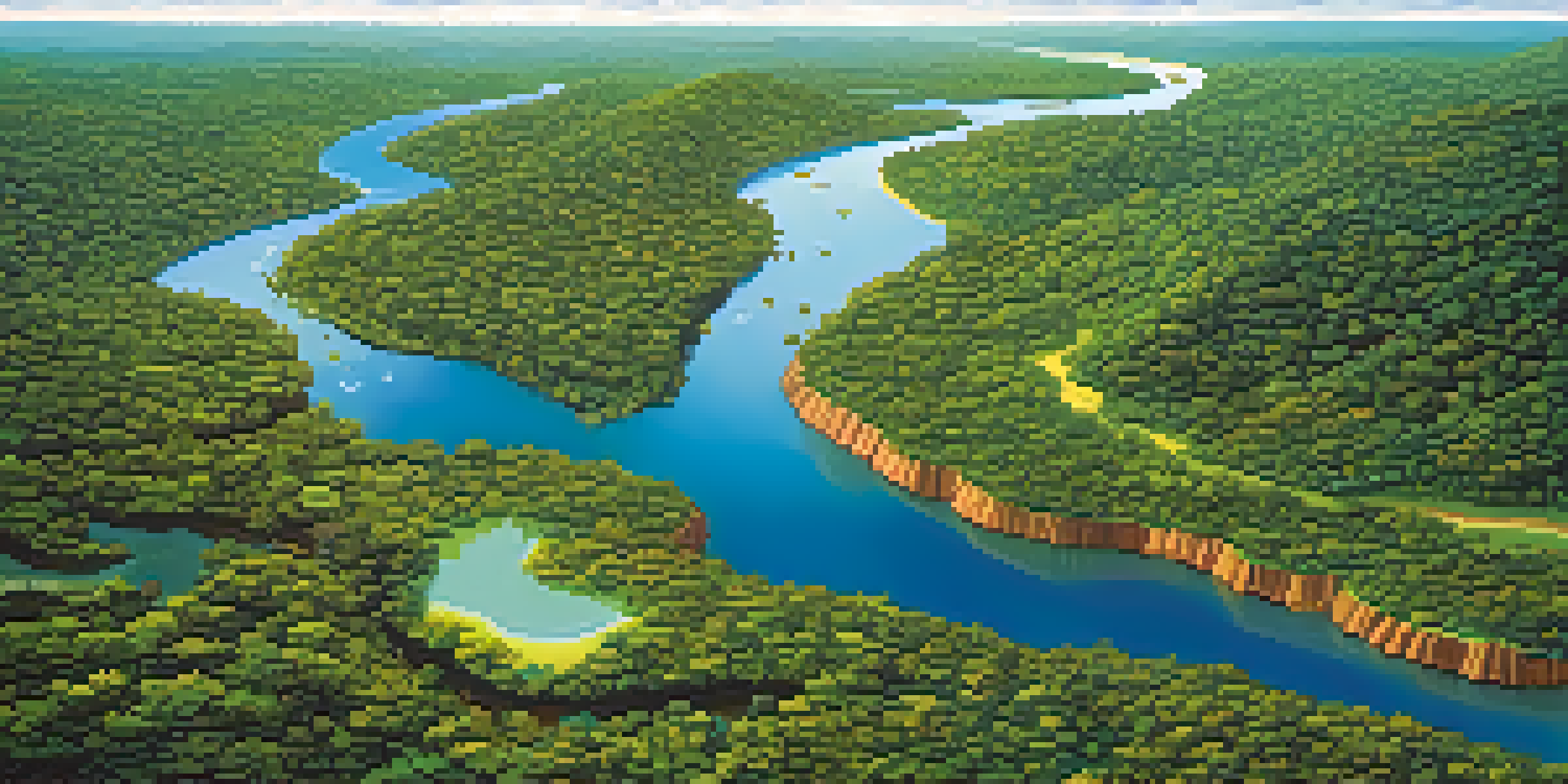The Unique Geological Features of Brazil's Amazon Basin

The Amazon Basin: A Geological Overview
The Amazon Basin is not just a lush rainforest; it's a geological marvel that covers over 5.5 million square kilometers. Characterized by a variety of landscapes, from floodplains to plateaus, this region showcases the Earth's dynamic processes. The basin is primarily composed of sedimentary rocks, which have formed over millions of years through the deposition of materials carried by rivers. Understanding its geological structure helps us appreciate the intricate balance of ecosystems found here.
The Role of the Amazon River in Shaping the Landscape
The mighty Amazon River, the lifeblood of the basin, has carved out a unique landscape over eons. As it meanders through the region, it transports sediments that contribute to the formation of various landforms, such as oxbow lakes and riverbanks. This constant reshaping of the landscape illustrates the power of water as a geological force. The river not only influences geology but also sustains the rich biodiversity that thrives along its banks.
Amazon's Geological Diversity
The Amazon Basin's varied landscapes, from floodplains to plateaus, showcase the Earth's dynamic geological processes.
Unique Soil Types: Terra Preta and More
One of the fascinating aspects of the Amazon Basin is its variety of soil types, including the famous terra preta. This dark, fertile soil was created by ancient indigenous communities who added organic matter and charcoal, making it a hotspot for agriculture. Terra preta stands in stark contrast to the surrounding nutrient-poor soils, showcasing human ingenuity in land management. The study of these soil types reveals much about the region's past and its agricultural potential.
The Impact of Geological Features on Biodiversity
The diverse geological features of the Amazon Basin play a crucial role in supporting its rich biodiversity. From the varied elevations of the Guiana Shield to the flat sedimentary plains, each landscape harbors unique ecosystems. For instance, the highlands are home to distinct plant and animal species that cannot thrive in the lowland rainforests. This complexity underscores the interconnectedness of geology and ecology in nurturing life.
Sedimentation Shapes Ecosystems
Sedimentation is crucial in the Amazon Basin, as it creates new habitats and influences local ecological balance.
Volcanic Activity and Its Geological Significance
While the Amazon Basin is primarily known for its river systems, volcanic activity has also shaped its geology. The nearby Andes mountains, formed by tectonic activity, influence the basin's climate and hydrology. Volcanic eruptions can lead to the formation of new landforms and deposit minerals that enrich the soil. These geological events remind us that the Amazon is a product of both water and fire, creating a dynamic environment.
Sedimentation Patterns: The Lifeblood of the Basin
Sedimentation is a key geological process in the Amazon Basin, impacting both land and water. As rivers flow, they erode surrounding landscapes and deposit sediments downstream, shaping the terrain and creating new habitats. This ongoing cycle of erosion and deposition is vital for maintaining the ecological balance in the region. By studying these patterns, scientists can predict changes in the landscape and their effects on local ecosystems.
Human Impact on Geological Integrity
Deforestation poses significant threats to the Amazon's geological features and the biodiversity dependent on them.
Challenges to Geological Integrity: Deforestation and More
Unfortunately, the unique geological features of the Amazon Basin are under threat from human activities, especially deforestation. As trees are cut down, the soil loses its stability, leading to erosion and altered sedimentation patterns. This not only affects the landscape but also the biodiversity that relies on it. Addressing these challenges is crucial for preserving the basin's geological integrity and the ecosystems that depend on it.
Conclusion: The Importance of Understanding Geology
Understanding the unique geological features of the Amazon Basin is essential for conservation efforts. By recognizing the interconnectedness of geology and ecology, we can better appreciate the delicate balance of this environment. Moreover, a deeper knowledge of these features can inform sustainable practices to protect the basin. As we explore the Amazon, let us remember that its geological wonders are not just a backdrop but a vital part of its identity.